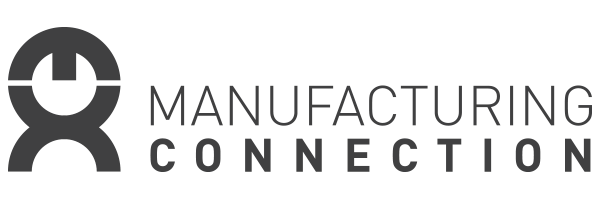
by Gary Mintchell | Jan 7, 2014 | News, Operations Management, Software
Dassault Systèmes unveiled DELMIA’s Apriso Quality Solution, which includes enterprise quality management software (EQMS) and professional services that expands the reach of traditional Quality Management Systems (QMS) to the global shop floor, across the supply chain, and up to executives. By extending visibility and control into global operations, this new DELMIA solution addresses the challenge of achieving higher quality across the enterprise and product supply network at a lower total cost.
“There’s a gap in many organizations’ ability to effectively deliver quality products and processes, and our research over the past several years has revealed that enterprise quality management software (EQMS) is the bridge. EQMS transforms many of the traditionally siloed quality efforts that are causing roadblocks to improvement today,” stated Matt Littlefield, President and Principal Analyst at LNS Research, in “What’s Stopping You from Achieving Quality Excellence?” on September 11, 2013.
Specific attributes of this solution include:
- Vertically aligned, from in-line SPC and quality inspections, to enterprise-wide quality planning, to out-of-the-box quality dashboards and analytics
- Global in its ability to create corporate standards and quality processes, enforce them across locations and suppliers, all within a closed loop system that supports continuous improvement
- Detailed with complete track and trace for both as built and as maintained, for better root cause analysis and initiation of preventive and corrective actions, ultimately leading to improved brand protection
“Globally distributing manufacturing operations has exposed weakness in disparate quality systems, which can cause data inconsistency, delayed response times and additional cost,” explained John Fishell, Vice President of DELMIA Apriso Product Management, Dassault Systèmes. “Apriso Quality Solution can improve global quality performance in such a way that complements an enterprise’s manufacturing operations management strategy.”

by Gary Mintchell | Oct 7, 2013 | Operations Management, Software

ARC Advisory Group Changing Dimensions
Tim Sowell, VP and Fellow at Invensys, has been writing some thoughtful blogs at his Invensys Evolution blog. The link takes you to this first note. Check out a couple of other recent ones. In these posts, he looks at trends and challenges for manufacturing intelligence software.
In his first post of two where he discusses his customer conversations of last month, he talks about their needs for support for making decisions today–not waiting until more information comes in. They need the information presented clearly and in real time.
“All through this week in Europe I have spoken with customers looking for decisions in the NOW, and more people empowered to make these decisions. This does mean the traditional worker is evolving to knowledge worker, and this is across the different roles in the operational plant. But following on from last week’s blog the drive for realtime decisions is driving up the requirement for more advanced analytics to enable that decision, especially as the experience and time in the role of the decision maker reducers.”
He cites a study by the ARC Advisory Group (see chart) that emphasizes the following points:
- The shift in time focus from Past to Future: in the industrial world I would put that as truly an expansion from the past and current to now past, current and future.
- From a performance to a predictive view that enables that decision
- Move from Batch data to realtime, this is key as we move from reports to dashboards that are dynamic with small trend tails showing now and immediate past easy to understand from a glance.
- Move from IT intensive creation to Self service: this is even more apparent in the industrial space as operations want to be self empowered without the complexity and delay in engaging either engineering or IT.
- Users move from a few Gurus to a collective team of people what I referred to as the flexible operational team (many blogs on this) where experience is shared to achieve realtime decisions. Virtual experts in an active community either from within a company across sites, and subcontractors/ suppliers can now be in the realtime decision with the on plant person.
- Deployment will shift from “on Premise” to a “Managed set of on demand services” this while only just starting in the industrial space makes logical and even more sense in the industrial space. Because the information and these virtual communities will live outside of plants and across the world. Companies are talking of Asset Facebook concepts to where a community of peers and experts across plants working on similar equipment and processes can interact share and make informed decisions together. The concept of a hosted set of services for an Information environment will be foundational for this to work.
Another comment is the automated actions, I see this more in the industrial space as the shift from just supplying information to having embedded operational procedures to guide users through consistent actions.
Key Operational Challengers
While you’re on his site, check out the post on Key Operational Challengers. discussing a conversation with three end users who own strategy, he discovered that their key challenge was the high level operational drivers not the technical hurdles that they are facing as these are just constraints that designs and new practices must absorb.
They identified three key drivers in the course of the discussion:
Agility to adjust to market conditions and change. The clear common requirement was the end to end operational alignment, understanding across the value chain. This holistic operational control, was a significant change in all three industries the sites had run with independence, in all cases the expectation was that site / regional uniqueness will be maintained but now alignment and traceability of action, product across the total value chain, e.g.| multiple assets/sites.
The operational workforce transformation operational role retention / rotation. The impact of the operational culture, approach with gen Y and more holistic operations. [Gary note: I think this holistic operations concept is powerful, and I’ve been looking at ways to cover that more extensively.] Two critical factors are knowledge transfer from the retiring generation and how is the captured, and they are already seeing people in roles for much less time, and this is across the operational roles. So the issue is how to embed and design the experiences to enable to become effective dramatically faster, e.g.| 20% of the time today.
New Product Introduction. The life time of products and services is dramatically reducing, and the companies stated that seem to have ever change and introduction of new products and services. The move is to individual products and services for each consumer. How do we introduce, absorb these new products and services to the operational systems that will deliver them in a timely manner without significant error.
Sowell concludes, “Are these three points new no, but the fact that 3 decidedly different thought leaders from three different industries rapidly agreed on these as operational drivers, combining this with the fact that each point effects the others. The eventual take away was they were being asked to deliver one operational ecosystem to run the end to end product production over multiple assets with operational consistency. While 3 dynamics constantly change, the value assets / plants are added and taken away, new products and services are added at an ever increasing rate, while the operational workforce is becoming dynamic with a culture of evolution of the role and job, and people will not be in a role longer than 2 years.”

by Gary Mintchell | Sep 25, 2013 | Automation, M2M, Operations Management, Software, Technology
 Are we seeing practical adoption of M2M technologies finally. Meridium points to that as a key feature of its latest release of its Asset Performance Management software. Enhanced support for work process also fits snugly within the trends of the past few years.
Are we seeing practical adoption of M2M technologies finally. Meridium points to that as a key feature of its latest release of its Asset Performance Management software. Enhanced support for work process also fits snugly within the trends of the past few years.
Version 3.5.1 of its Asset Performance Management (APM) software enhancements include new work process dashboards for the end-to-end management of performance improvement opportunities, expanded monitoring policies to address process excursions and enhanced integration capabilities to enable machine-to-machine (M2M) communications.
“Every Meridium product release is a reflection of fulfilling customer needs,” said Bob DeMaria, Maintenance Engineering Technical Advisor at Dakota Gasification Co. “As a Meridium user, it amazes me how every release offers a new solution to our challenges. For example, in v3.5.1 they added a new analytical model, which allows us to ‘see’ the impact performing an inspection has on an asset’s risk ranking. This added functionality will provide huge efficiency gains by allowing us to optimize our inspection intervals.”
Meridium v3.5.1 Policy Manager boosts M2M integration with advanced analytics to drive the right actions from the wealth of information collected. This includes new monitoring capabilities to automatically trigger, close and analyze integrity operating window (IOW) excursions or other critical events. “Operation of assets outside the defined integrity operating window introduces unknown operating risk,” said Louise Pattison, Meridium Product Manager. “Conditions change, and if you are not tracking process excursions, you may be living under a veil of false security.”

by Gary Mintchell | Jul 22, 2013 | Operations Management, Software
 [Updated with corrected analyst information] Infor announced “Infor Business Intelligence (BI) 10x” last week. This new product is designed to modernize data processing and enrich manufacturing decision-making according to the press release.
[Updated with corrected analyst information] Infor announced “Infor Business Intelligence (BI) 10x” last week. This new product is designed to modernize data processing and enrich manufacturing decision-making according to the press release.
Senior Product Manager Jan Gahde told me that Infor may not be widely recognized as a Business Intelligence supplier, but he noted that former Gartner analyst Howard Dresner, cited in his recent Wisdom of Crowds study says that Infor is actually ranked pretty highly.
The solution delivers advanced analytics and planning capabilities, self-service dashboards, and social collaboration for a more modern, mobile, and social experience. Core technologies include Infor ION and Infor Ming.le to create “an experience that surpasses the ordinary to maximize real-time visibility and cultivate business development.” The press release called it a “beautiful” user interface. When I challenged Gahde with that rather extreme word, he told me that Infor has a design team focused on creating these modern, beautiful interfaces.
The solution leverages Infor ION, a lightweight middleware, to connect with the Infor ION Business Vault to provide information in real-time, in-context data, and deliver more reliable reporting that is not impacted by operational business application upgrades.












